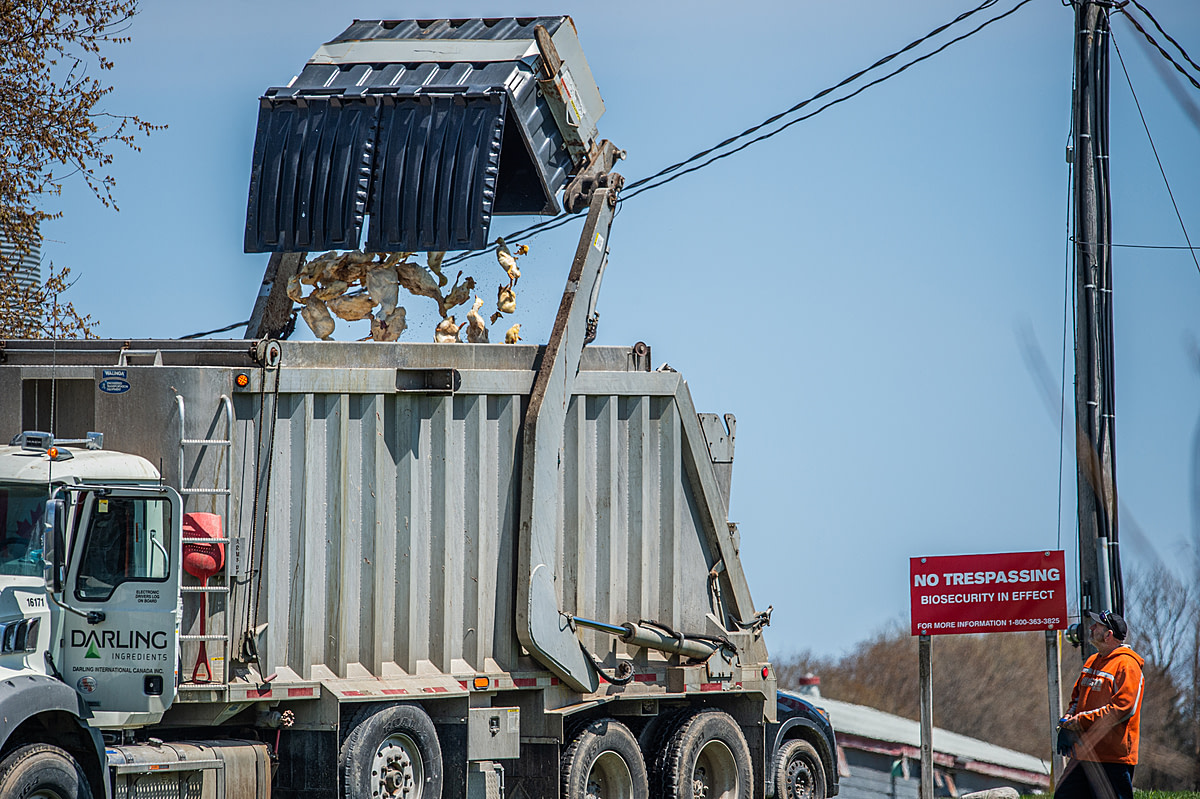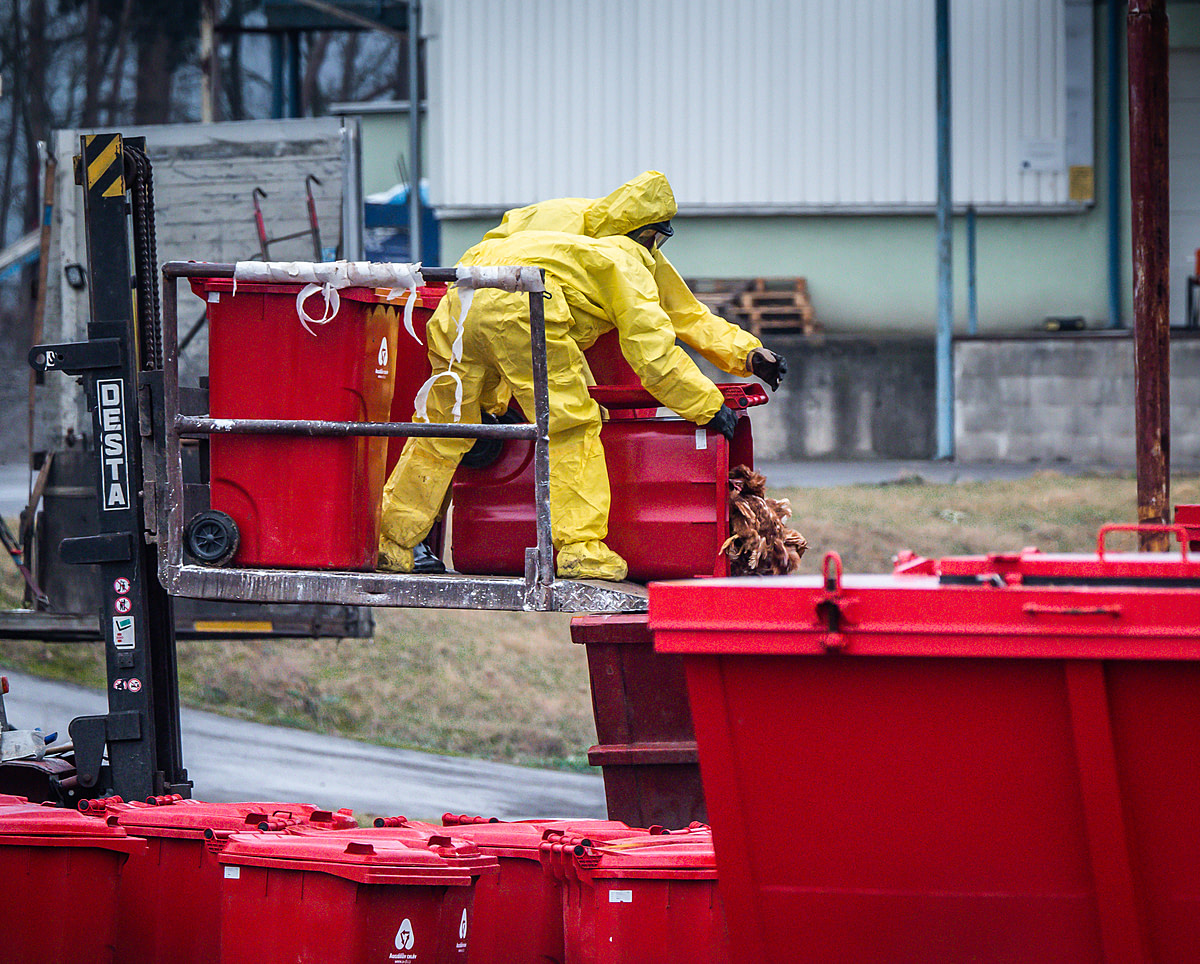In Photos: Bird Flu Around the Globe
Avian influenza, more commonly referred to as bird flu, is now a global story as the highly pathogenic virus spreads rapidly, devastating both wild and domesticated bird populations.
These visuals provide a glimpse into an underreported part of the story about bird flu, highlighting the unavoidable connection between intensive animal farming and disease transmission.
Masses of dead hens lie piled inside the bucket of a loader outside the barns of an egg farm near Prague in Czechia. The hens have been killed and workers wearing protective suits are in the process of removing them from the farm due to an outbreak of the H5N1 bird flu virus. Czechia, 2021. Lukas Vincour / Zvířata Nejíme / We Animals Media
In addition to domesticated birds contracting the virus from migratory bird populations, we’re now seeing reports of other wild animal species becoming infected; and even rare but increasingly concerning cases of human death. Industrial farms have been sources of massive killing as industry has attempted to control spread in its flocks, killing millions of animals by suffocating them.
In 2022, We Animals Media photojournalists documented the impact of bird flu on farmed chickens and ducks in Canada as cases of the virus were on the increase. We also have video footage of ventilation shutdown in the US and bird flu outbreaks in Czechia. We’ll be adding more visuals to our collection over the coming weeks and months as we gain further international reportage of this issue.
Explore more bird flu images and video clips via our stock collection.
Sign up for monthly Stock Alerts to receive the latest bird flu visuals from We Animals Media.
More like this from We Animals Media:
System Shutdowns and The Failures of Factory Farming
by Kelly Guerin | Jul 30, 2020
Eggs: The Unseen Story
by Kelly Guerin | Jul 28














